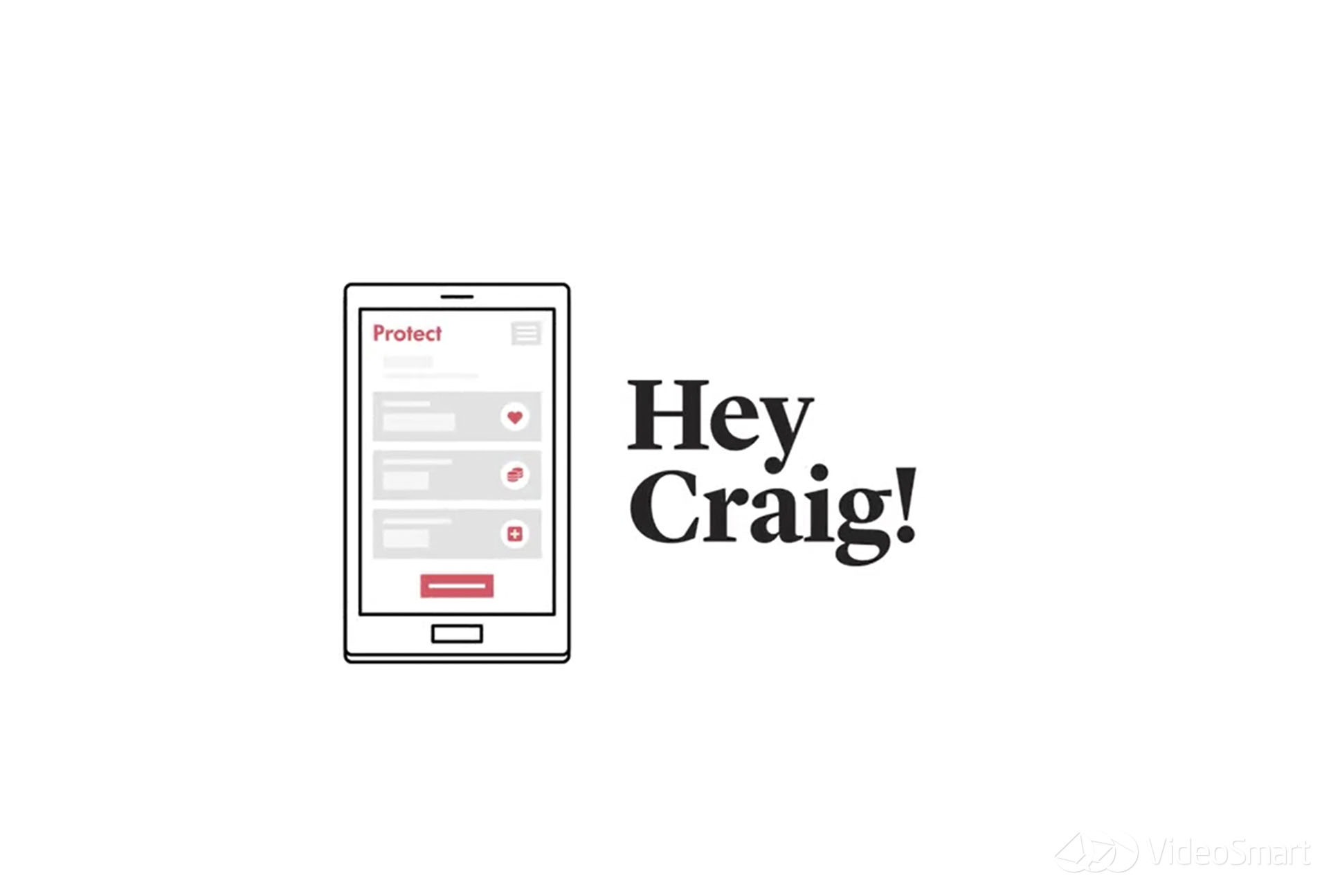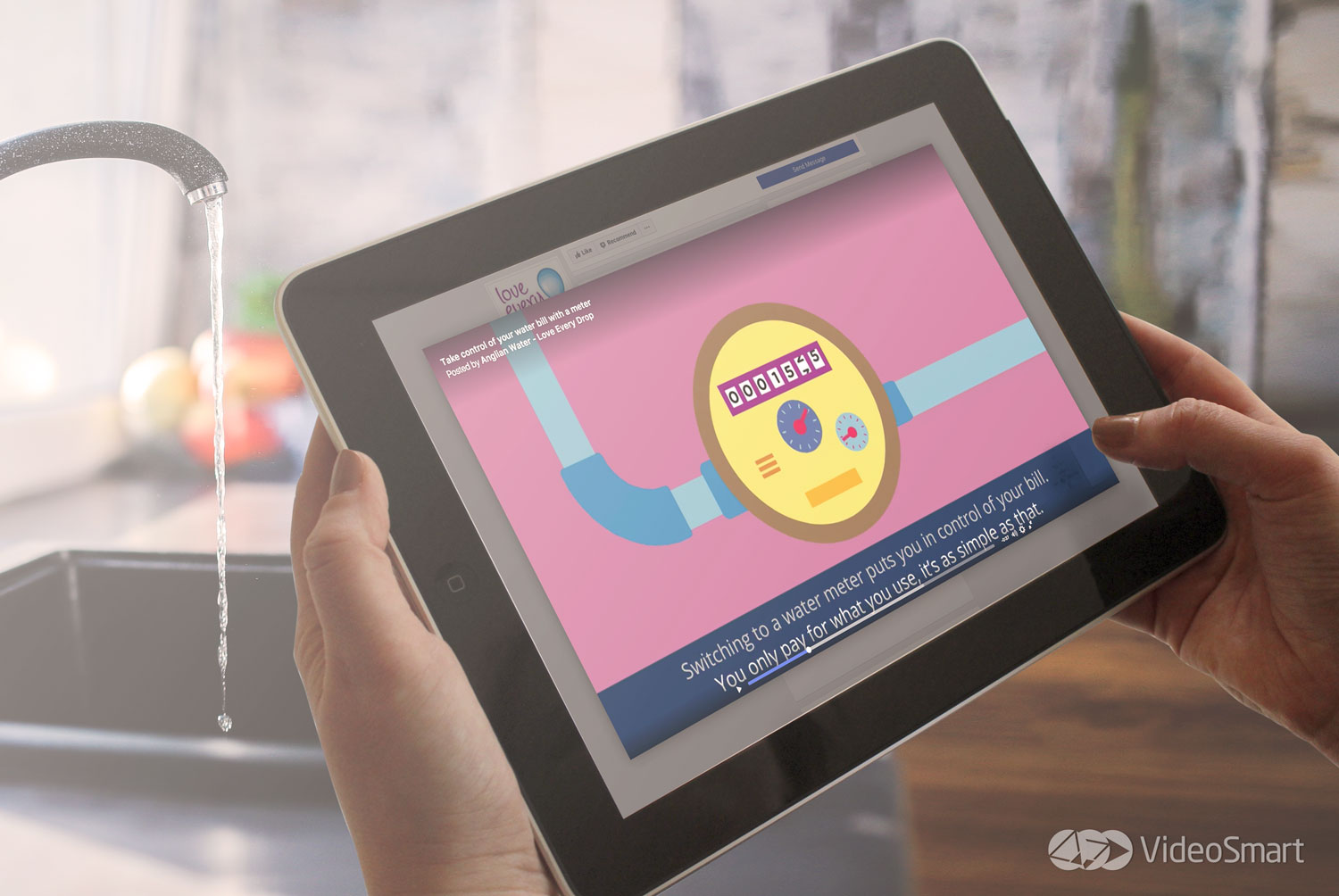Five New & Innovative ways to Implement Personalised Video into your Marketing Strategy for 2021

What is Personalised Video?
Personalised video is a marketing and communications solution that combines the effectiveness of video content with data to ensure that a message is both engaging and relevant to its consumer. Video personalisation capitalises off the fact that viewers retain 95% of a message when they watch it in a video, compared to just 10% when reading it in text.
This means that any lengthy, data-heavy information can be more easily conveyed through a video rather than several pages of jargon-filled text. Furthermore, video is the most exciting and dynamic way of communicating with an audience, hence its huge success in the social media world. Personalised video is a way of customising your communications to the direct needs of the customer, and what better way to reach them?
Why Video?
There is no doubt about it, video is the world’s preferred form of media. With the sharp rise in popularity of video-content-only platforms such as Vine, YouTube and most recently TikTok, it has been proven that no matter the platform, video is here to stay. Online video consumption has grown year upon year, ‘by 2022, online videos will make up more than 82% of all consumer internet traffic — 15 times higher than it was in 2017.’
To put that into perspective this meant that in 2017 ‘56 exabytes (equivalent to one billion gigabytes) of internet video was consumed every month’, whereas by 2022 this will ‘quadruple to 240 exabytes per month’ – a huge amount of content.

The History of Online Video
Our obsession with online video content began back in 2005 with the creation of YouTube, which now sees its users view more than 1 billion hours of video each day. The platform was acquired by Google for $1.65 billion, just a year and a half after its inception, Google recognised the huge potential of online video, calling it "the next step in the evolution of the Internet.". A good call indeed, as YouTube is now estimated to be worth up to US$170 billion.

We then saw the launch of the short-form video app Vine in 2013, where its users could share six-second looping video clips. Vine was founded in June 2012 and was acquired by Twitter not long after that in October. It quickly went viral, becoming the most downloaded free app on the iOS App Store just 3 months after its launch.
Its success was short-lived, however, and was discontinued after just 3 years in October 2016. Video clips from Vine still receive a cult following and led the way for what is now seen as ‘meme’ culture to internet users.

The ‘Vine’ experience is most often compared to the most recent short-form video app to see huge levels of success: TikTok. TikTok ‘started life as three different apps’, the first of which, called ‘Musical.ly’, launched in China back in 2014. ByteDance, a tech giant in China then launched a similar platform Douyin in 2016, which was then expanded into international markets under the name TikTok. ByteDance purchased Musical.ly in 2018 to access its success and audience base in the US, they then merged the platforms – and we now have what we consider to be TikTok today. The success they have seen is huge, as more than 1 billion videos are viewed on TikTok every day and the app has been downloaded over 2 billion times.
The average person now spends nearly 7 hours daily on the internet, with that time being spent by 78% of people watching online videos every week, and 55% viewing online videos every day. It is unsurprising that one million minutes of video cross the internet every second.

Why Personalisation?
In 2021, the average person is now estimated to encounter between 6,000 to 10,000 ads every single day. This number is astronomical and has nearly doubled from the 5,000 we saw daily back in 2007, which we can attribute to the digital transformation and domination of media that we have witnessed over the last decade. So, that leads us to the question: Why personalise these advertising messages?
Well, quite simply, to cut through the noise. With generic, mass-messaging, the reliability of your target audience engaging with your message is a question of odds – at the low end, this is the 1 in 6,000 chance that your ad is one of the lucky ones that managed to capture their attention. Forbes describes this as a kind of desensitisation to advertising: ‘at some point, we start a screening process for what we engage with and start ignoring brands and advertising messages, unless it’s something that we have a personal interest in.’ There is a key phrase here, ‘personal interest’.
As high a number as 72% of consumers say that they only engage with personalised messaging. Furthermore, 70% of millennials are frustrated with brands sending irrelevant emails. Mass-messaging is no longer an effective marketing tool, in fact, it goes against consumers’ expressed preferences. How do we solve this? Personalised video.
How to Use Personalised Video Effectively:
So, to show you how it’s done, here are five new and innovative ways to implement personalised video into your marketing and communication strategy for 2021:

1. Add Personalised Video to your Employee Communication Strategy
Did you know that the percentage of remote workers jumped from 31% to 62% in just 3 weeks due to the Covid-19 pandemic? Now more than ever, with our remote-working capabilities expanding, it is important to overcome the distance when communicating with your employees. Furthermore, employee productivity increases by 20 to 25% in organisations where employees are connected. An effective communication strategy with your employees cuts down the time weekly that they spend clarifying their understanding of your objectives, news, and job tasks and increases overall productivity. Unfortunately, your monthly company newsletter just might not cut the mustard.
Remember the statistic above? A huge 95% of a message is retained when conveyed through video, vs a mere 10% when in text. In 2021, it is important to adapt your employee communication strategy to one that works for your employees, as few or many as they may be, working remotely or in-office; to make sure that each and every message delivered is clear, concise and cuts down that time spend clarifying unclear or forgotten communications.

2. Deliver Important Information to your Customer in a Dynamic and Memorable way
Does your product or service involve ensuring that your customer has both received and engaged with important information, such as details regarding their policy, key payment dates or a financial agreement? This type of information can often be overlooked, with only 66% of emails opened on mobile devices being read for more than eight seconds. Some call this ‘8-Second Challenge’ of email marketing. Simply put, can your information be absorbed in under eight seconds? Most likely not.
Personalised video allows you to combine data with the creativity and engaging nature of video. Delivering this kind of important information through personalised video can increase email open rates by more than 50%. It can also increase click-through rates, to a landing page, your app or a PDF download of their policy or agreement by more than +200% - indicating that it is not the information that is the problem, but the delivery.

3. Show your Customers you Care with a Personalised Offer
Did you know that eight out of ten people have purchased a piece of software or app after watching a brand’s video? Video is a great way of communicating the benefits and features of your product or service in a dynamic and creative way. Personalising a video with an offer based on your customer’s preferences and behaviours ensures that you are engaging your customer with messages that are both relevant and meaningful to them.
Do you have the data telling you that their birthday is coming up? Even better. It is never a misstep to thank your customer base for their patronage in today’s competitive market. But aligning your messages with key dates for the customer or their consumer journey (e.g. Celebrating 10 years of banking with us! Happy Birthday! Here’s an offer just for you), informs the customer that the message they are receiving is personal to them – and they are that much more likely to be engaged.

4. Use Personalised Video to Educate
Training processes are often antiquated, time-consuming and quite frankly, boring. Mass-training especially; it can be difficult ensuring that every employee has taken in the important protocols, sales techniques, new product information or whatever it may be that you need to communicate – which often leads to large amounts of documents to read and sign, and sign again.
These types of messages are a necessary evil, but they don’t have to be so painful for HR or employees. Why not revolutionise your education practices by going for something we know that your target audience already loves to engage with? Video. Did you know that 65% of people use YouTube to help them solve a problem? This means that your audience, whoever they may be, are more than likely already heading to video platforms to train and educate themselves using self-led video.
If you want to go that step further and ensure that your audience is engaged, then opt for in-video interactivity. Interactive elements like branching, clickable CTA’s and quiz-style multiple-choice options mean that your training video can be self-navigated and can even track results as to whether your employees understood the information they received and are able to implement it into working practices.
This doesn’t need to stop with your employees, personalised and interactive video can be a great way of educating your client base also. 72% of customers would rather learn about a product or service by way of video. Do you have a new investment opportunity you want them to understand better? Use video to communicate the details in a way that they will remember.

5. Save Time and Energy through Personalised Video Onboarding
So, your customer or client has decided to go with your product or service - that’s great! Most companies will concentrate their efforts on getting that sale over the line, whether that be buying a car, choosing a credit card or purchasing insurance; but a positive and memorable onboarding experience not only reassures your customer that they made the right choice but helps you retain them as a customer, engage them with your brand and even upsell in the future.
The top two reasons that customers churn are 1) they don’t understand your product, and 2) they don’t obtain any value from it. Personalised video is a simple solution to this problem. An effective onboarding experience thanks your customer for their patronage, explains your product or service clearly and concisely to ensure that they get as much value as possible, and directs them to the next steps in their customer journey. A huge 97% of marketers say video has helped users gain a better understanding of their products and services.
So, there you go. Take a step in the right direction today and contact us at hello@videosmart.com to revolutionise your marketing and communications strategy to one that uses personalised video to achieve great results.


